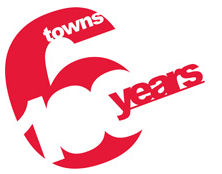31st March 1910 saw the federation of the
six towns to form the County Borough of Stoke-on-Trent
|
Stoke-on-Trent Local
History |
|
|
|
|
| Federation of the six towns 31st March 1910 saw the federation of the six towns to form the County Borough of Stoke-on-Trent |
![]()
![]()
![]()
next: Plant and Bennett
previous: Harry McBrine
contents: Index page for
Federation


Federation article by local
historian - Fred Hughes
People who made the Potteries - The Labour Party
|
By 1929 the Labour Party began strengthening its ranks on Stoke-on-Trent council with the support of trade unions. While most of the original pottery manufacturers had been replaced by tradesmen and retailers, there were only 14 councillors who were manual workers of which seven were union officials. Stoke-on-Trent had three Labour MPs: Lady Cynthia Mosley for Stoke, wife of the future fascist leader Oswald Mosley; Arthur Hollins, the representative of Hanley, and Andrew Mclaren in Burslem.
Hollins remained a councillor and in 1933 he became Lord Mayor. In 1935 he was re-elected to parliament serving Hanley until he retired in 1945. He was awarded the CBE in 1949 and was made a freeman of Stoke-on-Trent in 1960, two years before his death.
Although the country had turned against Labour in 1931, the City generally remained red. It was during this political adjustment that the vicar of Etruria, the Rev Thomas Horwood, joined the Labour Party and became a councillor. Horwood lamented loudly over the damage the strikes and unemployment had inflicted upon his community and decided he would turn pastoral ministry into proactive politics. He soon showed distinctive management skills becoming chairman of most committees and directing the City's housing policies and slum clearances throughout the 1930s. Horwood was a cross-party leader. He became chairman of the important Wartime Emergency Committee which was especially relevant in his position as a councillor for the City's most vulnerable district where Shelton Bar, Etruria railways and the central gas works were all bombing targets. His vision, though, went far beyond parochial politics. He was irritated by the district's slow social and economic progress since 1910 and put it squarely down to a lack of political direction. He claimed that the city needed single-party direction and that political vagueness had impeded Stoke-on-Trent's development and its potential as a regional centre with a diverse economy. Aside from the Michelin Tyre Company inward investment of any description had been half-hearted and unconvincing. He accused industrial leaders of accepting the politics of inevitability and self-endurance in protecting Stoke-on-Trent's indigenous industries. The only inevitability Tom Horwood saw were the future years of austerity that would certainly come to a post-war Britain. Fifty years ahead of his time Horwood claimed the Potteries would decline if it did not embrace economic diversity. And so he set up a Reconstruction Committee designed to change the future complexion of the city and specifically to generate profitable enlargement to attract investors.
Two years later the council was a changed place. The chamber had become a focus for party activists on both side of the political spectrum. Labour took power with party politicians such as MPs Barnett Stross, Harriet Slater and future MP Bob Cant. Alongside these were left-wing socialists Horace Barks, Blanche Meakin and young tyros James Westwood and Ronald Southern - a party with urgency to get things done. Two world wars had stopped progress, now it was time to get stuck in and finish the job. Tom Horwood's call for a progressive city was picked up by an extraordinary man who, in 1960, was to become Stoke-on-Trent's first appointed council leader. It was under his direction that Stoke-on-Trent became a modern city. His name was Albert Bennett whose story is told next week.
|
![]()
![]()
![]()
next: Plant and Bennett
previous: Harry McBrine
contents: Index page for
Federation